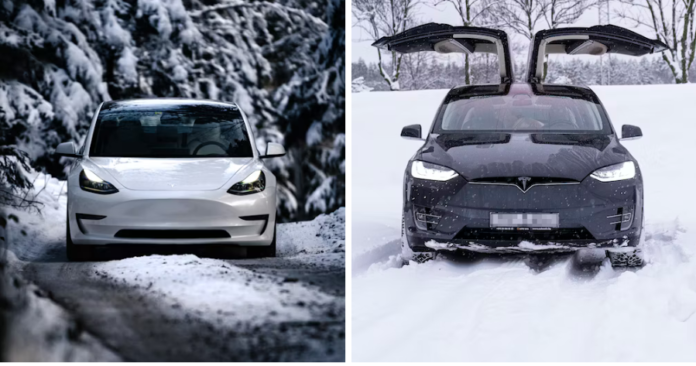Electric vehicle (EV) owners are facing unexpected challenges that are testing the resilience and efficiency of their eco-friendly choices to the test. As winter cold intensifies, the limitations of EV technology come to the forefront, raising concerns and prompting discussions about how to navigate the cold while being environmentally friendly.
The core of the issue lies at the very heart of electric vehicles: the lithium-ion battery. Designed to fuel our progress toward a sustainable future, these batteries are now revealing their vulnerability to the cold. Owners are reporting significant drops in both the driving range and charging speed of their vehicles, a predicament not entirely unforeseen but still startling in its practical implications. Imagine waiting at a charging station for more than five hours and realising that the efficiency of your trip is being compromised by the technology that powers it.
But why do electric vehicles fail in the cold? The answer is as scientific as it is frustrating. Like all batteries, lithium-ion batteries work through chemical reactions. These reactions facilitate the movement of ions between terminals, a process that occurs quickly in hot climates but slowly in cold weather. This diverts some of the battery energy that could otherwise propel you forward to maintain optimal battery temperature and heat the interior of the vehicle, reducing range by up to 25%.
Moreover, the cold affects the charging speed of your vehicle. Charging speeds are deliberately reduced to prevent the battery from becoming unstable and failing. This is a necessary precaution that nonetheless adds a layer of complexity to owning an EV during winter.
Despite these challenges, there are strategies to mitigate the cold’s impact. By making fewer short journeys, battery life can be conserved as each stop and start cools the battery down and requires more energy to warm up. Tesla recommends always keeping your car plugged in and maintaining a charge of at least 20%. Interestingly, it can also be helpful to drive for at least 30 minutes before charging, as hot batteries are easier to charge.

The industry is not idle in the face of these challenges. Efforts are underway to enhance the efficiency of electric vehicles in cold climates, with the aim of minimizing the trade-off between environmental impact and winter performance. It is a reminder that the path to sustainability is not without obstacles and curves and requires innovation, patience and a collective will to overcome it.
As the world leans into the embrace of electric vehicles, the journey reveals complexities unanticipated in the warmth of idealism. The cold of winter brings a clear message: the path to a greener future is a journey of constant learning and adaptation. The resilience of electric vehicle owners and the innovative spirit of manufacturers will undoubtedly push the boundaries of what is possible and ensure that the pursuit of sustainability never stops, even in the coldest weather conditions.
FAQs
Why do electric vehicles struggle in cold weather?
EVs struggle due to the reduced efficiency of lithium-ion batteries in cold temperatures, affecting driving range and charging speed.
Can cold weather damage an EV’s battery?
The cold itself does not damage the battery; it temporarily reduces performance. EVs are designed to manage these conditions without causing long-term harm.
How much can the cold reduce an EV’s driving range?
The driving range can be reduced by up to 25% in cold weather due to the need to heat the cabin and maintain battery temperature.
Why does charging an EV take longer in the cold?
Charging speeds are reduced in cold temperatures to prevent the battery from becoming unstable, which could lead to failure.
What can EV owners do to mitigate cold weather effects?
Owners can take fewer short trips, keep their car plugged in with at least a 20% charge, and warm up the battery by driving for at least 30 minutes before charging.
Are manufacturers addressing these cold weather issues?
Yes, car companies are continuously working on making EVs more efficient in cold weather to minimize the impact on performance.
Is it better to charge an EV in a warm environment?
Yes, charging in a warm environment, like a heated garage, can improve charging efficiency compared to charging in cold outdoor conditions.
What is regenerative braking and how does cold affect it?
Regenerative braking is a feature that recovers energy during braking and returns it to the battery. Cold weather can reduce this feature’s efficiency due to lower battery performance.
Should EV owners expect a permanent decline in battery performance after a cold sell?
No, the decline in performance is temporary, and normal battery efficiency should resume once temperatures increase.
What’s the key takeaway for potential EV buyers concerned about cold weather?
While cold weather poses challenges for EVs, understanding and preparing for these conditions can mitigate their impact, making EV ownership viable even in colder climates.






Can you be more specific about the content of your article? After reading it, I still have some doubts. Hope you can help me.
Can you be more specific about the content of your article? After reading it, I still have some doubts. Hope you can help me.